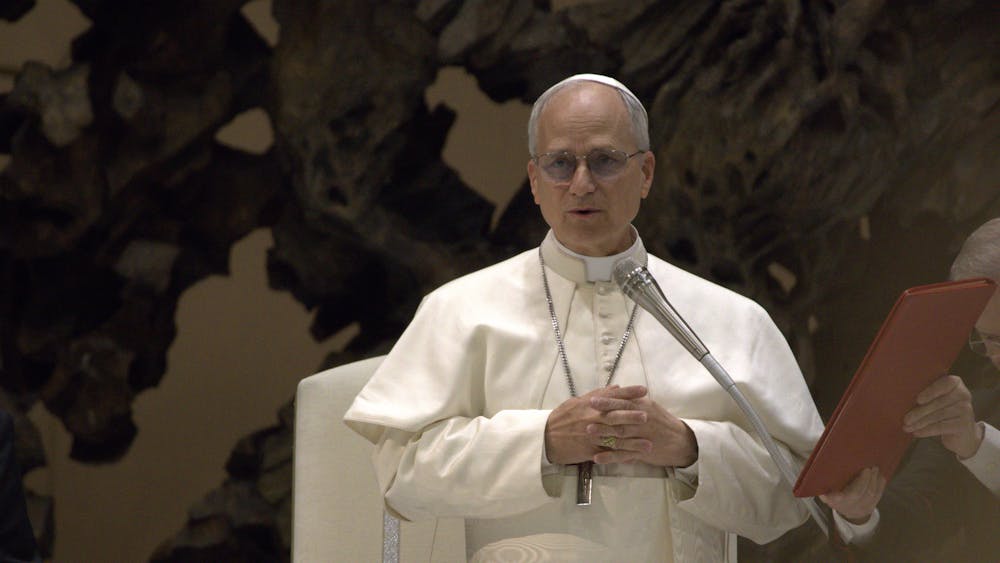As hospitals around the country face shortages of personal protective equipment, or PPE, Notre Dame research labs that have paused operations have donated their supply of PPE to the Saint Joseph County Unified Command, which is leading the local response to the COVID-19 pandemic.
Jessica Brookshire, senior program director for the Office of Clinical Partnerships at Notre Dame Research, said 34 labs had donated supplies as of April 2.
“A communication went out on March 20 to all faculty regarding the lab ramp-down process,” Brookshire said in an email. “In this communication, it was mentioned that local healthcare providers were in need of PPE and if they had items to donate to contact me.”
As the number of COVID-19 cases continues to rise globally, PPE suppliers have struggled to meet the massive increase in demand.
Sherri Bucher — adjunct associate professional specialist at the Eck Institute for Global Health and global health practitioner — said combatting COVID-19 is a complex process for many reasons, emphasizing the difficulty of dealing with a completely new virus.
“Within the public health and the medical setting, we talk all the time about evidence-based guidelines, evidence-based policies, evidence-based medical and nursing care,” Bucher said. “When you are presented with something that has very little evidence base, it's really hard to respond to it.”
While the virus causing COVID-19 is in the same family as the coronaviruses that cause the common cold, influenza, SARS and MERS, Bucher said it appears those who have been infected are highly contagious before they have begun showing symptoms, leading to the possibility that some of those infected never show symptoms at all. The delayed display of symptoms, Bucher said, has facilitated the rapid and extensive spread of the virus.
The complexity of the disease and the global scale of the outbreak has upset a delicately balanced system of supply and demand for PPE, Bucher said, in which the healthcare, manufacturing, supply chain and logistics, public health and financing sectors all play a part. This list, Bucher said, is by no means exclusive.
“They‘re all part of a system to ensure that there‘s the right kind of PPE, that it‘s good quality, that it reaches the people who need it when they need it,” Bucher said. “That system, which is very complicated and is across many different sectors, has to work cooperatively to make sure that the supply and the demand meet each other. Even in the best of times, this is a really complicated system.”
Even with rationing measures in place, the amount of PPE needed for a hospital treating patients with COVID-19 is massive.
“For example, in the state of Indiana, there's one health system I know of that — and this is conservative, this is under sort of rationing — they still use between 15,000 and 30,000 facemasks a day,” Bucher said. “That's one health system within the state of Indiana, that‘s not the number of masks in all the state of Indiana every day. That‘s just six or seven hospitals. So if you multiply that by county, by state, by federal, you can start to see the quantity that‘s needed.”
For a disease like COVID-19, Bucher said, the World Health Organization recommendations for PPE include goggles, aprons, gloves, face shields and more. Further, PPE needs to fit properly in order to be effective and requires specific machinery and materials.
“Many of our medical commodities, of course, are manufactured in China and China has been slammed,” Bucher said. “They had their manufacturing shut down. They‘re just now getting started. But they‘re very cautious, as they are right to be because they‘re worried about a second wave of COVID-19. It‘s not as simple as just converting a factory that makes pillowcases to a factory that makes face masks.”
Between the lack of concrete information, the multiple models predicting the spread of the disease and a shortage caused by simultaneous demand in 180 countries, Bucher said, hospital administrators are doing the best they can with the information they have.
“If you‘re a good hospital administrator, you want to plan very conservatively,” Bucher said. “You want to plan for the worst case, and in that case, you need to try to preserve your PPE. At the same time, you want to protect your health care workers and you want to protect your patients. So it's just a really hard problem and I don‘t think there's any easy answer.”
Brookshire said she feels proud of the way Notre Dame faculty has responded to the crisis.
“At a time that they were asked to hibernate their work, they gave of their resources to help others,” Brookshire said in an email. “In addition, I heard from colleagues that they were sharing the need for PPE with friends/family/co-workers and thinking of additional opportunities to help the community.”
The most common item donated has been gloves, but there have been thousands of individual items donated as well. While the high-quality items found in research labs are preferable to homemade masks, Bucher said, she is confident hospital administrators will find a way to use the masks thousands of people across the country are sewing and donating.
Any sort of contribution to hospitals is part of the solution, Bucher said. She emphasized that the attitude of community solidarity is “the best part of humanity” and is key to combating the virus.
“The only other way we‘re going to get through this as a society, in addition to trusting science, is to pull together,” Bucher said. “There is no ‘them’ when it comes to this virus. There‘s only us.”
Read More
Trending









